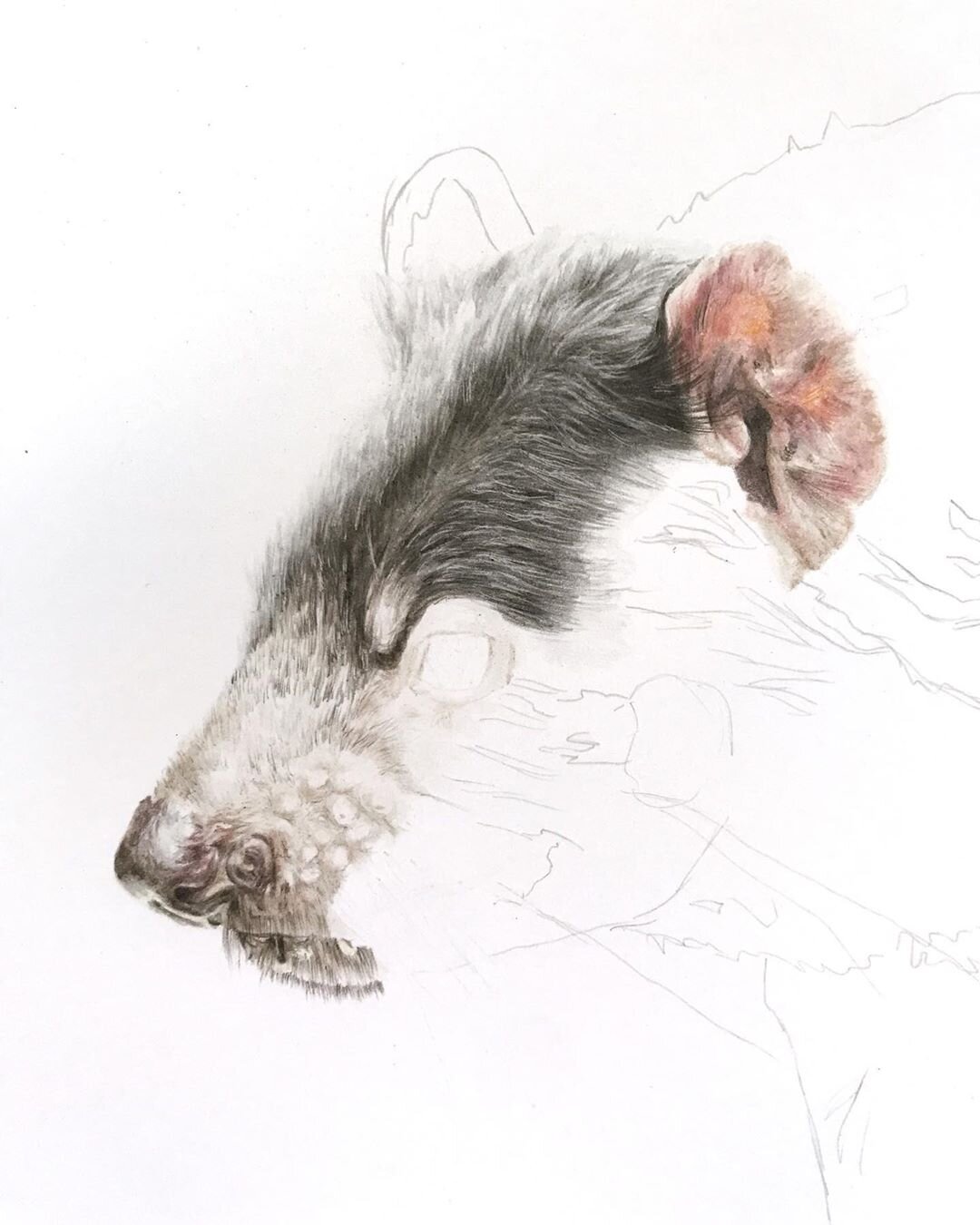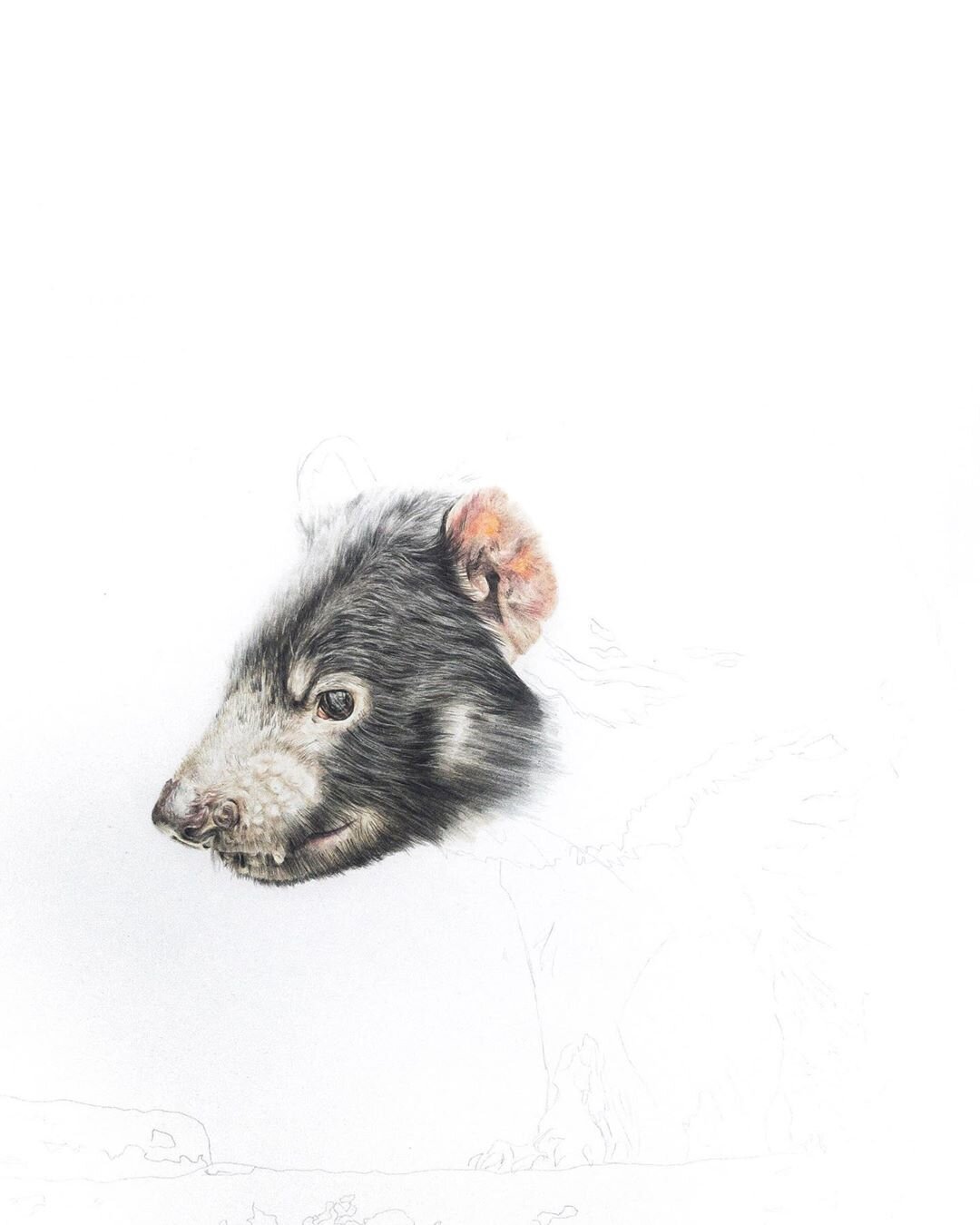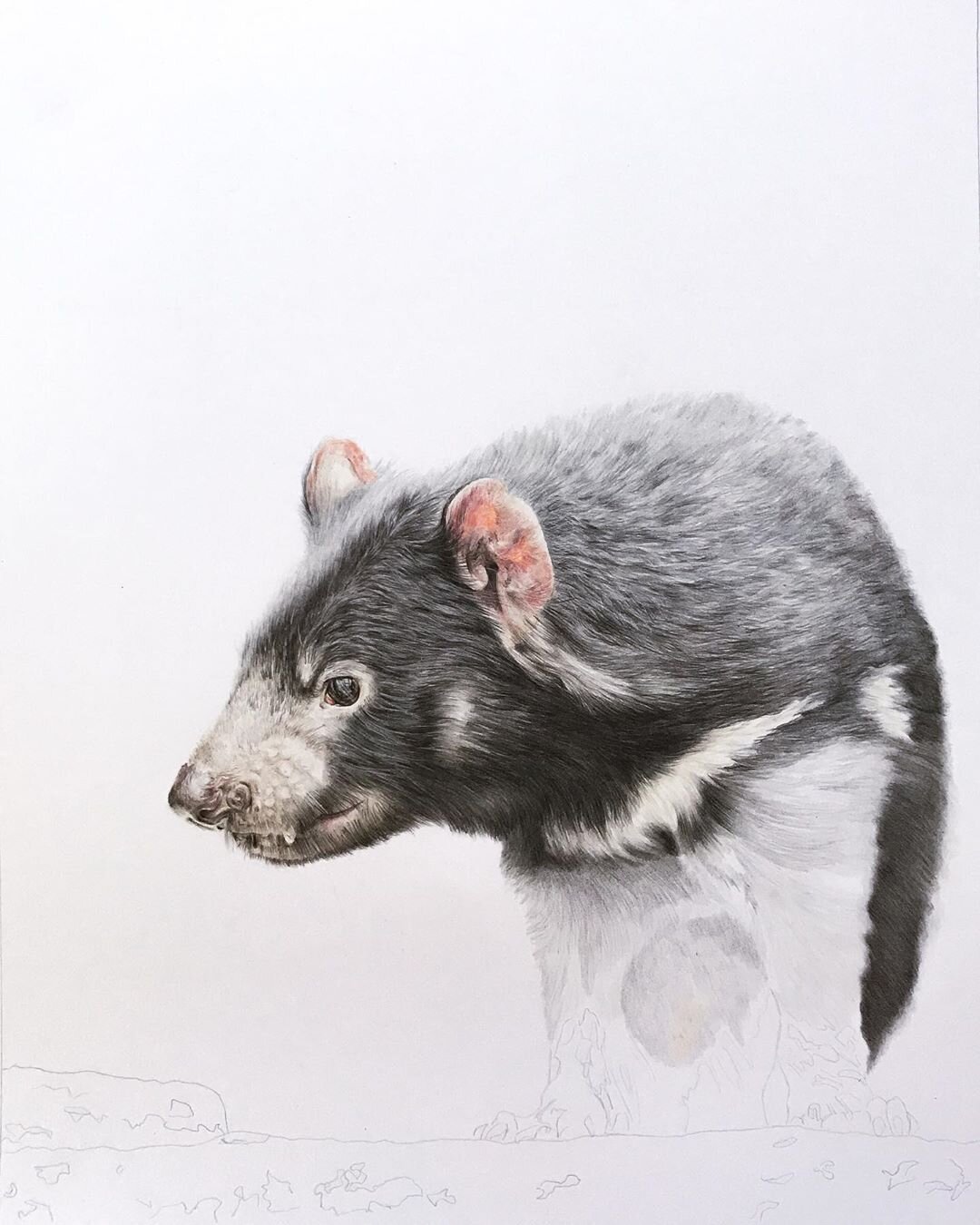"On The Brink" - A Tasmanian Devil Portrait
Even before I moved to Tasmania, I was enthralled with Tasmanian Devils. I love their scrappy nature, and I also love how absolutely misunderstood they are. Real devils are nothing like Taz the Tasmanian devil is on the cartoons - they aren’t mean or running rampant causing destruction in their wake.
⠀⠀⠀⠀⠀⠀⠀⠀⠀
Do you know why they’re called devils? Have you heard them screaming at each other while they’re feeding? Have you seen their bright red eyes staring at you through the black midnight?
Early European settlers were unnerved by these strange creatures thinking they were killing their sheep and, along with the now extinct Tasmanian Tiger, put a bounty on their heads. Two shillings and sixpence for males and three shillings and sixpence for females from 1830 to 1941 - Nearly 100 years of killing.
Yes, they’re ugly.
Yes, they screech exactly like when your mum catches you drinking straight out of the carton of milk.
And yes, they have the strongest jaws in the animal kingdom (by size) and can chop off your finger like a carrot stick. No biggie.
⠀
BUT they are also incredibly unique animals. Although usually solitary creatures, devils scream to let other devils know there’s food around, with up to 12 devils sharing a meal at any given time. They don’t hunt much but instead scavenge for carcasses, cleaning up our little island state. They care for their kits ferociously (seriously, don’t mess with a mama devil). They’re actually quite cuddly with their handlers. And have you seen them run?! Oh my god. Please YouTube that.
We’re losing our devils. Devils have developed a form of facial tumour that is not only deadly but also incredibly contagious (think of corona virus on steroids).
The Save The Tasmanian Devil Program has been working tirelessly to save our devils. Breeding programs, sectioning off islands of Tasmania to keep families of devils healthy, reintroducing health devils back into the wild, monitor roadkill sites are some of the programs they’ve undertaken in the previous years of work.
We only have 500,000 people on my island home of Tasmania, and while tourists and interstate visitors are interested in our devils, we need more people to fall in love with them. How do you expect people to want to save something if they haven’t fallen in love with it first? How can I expect you to love Tasmanian devils as much as I do without ever seeing one?
I just wanted to capture a moment showing the beauty of our devils; not with it’s jaws wide open, not when it’s eating or screaming at other devils, but in a moment of peace, the way that I see them.






